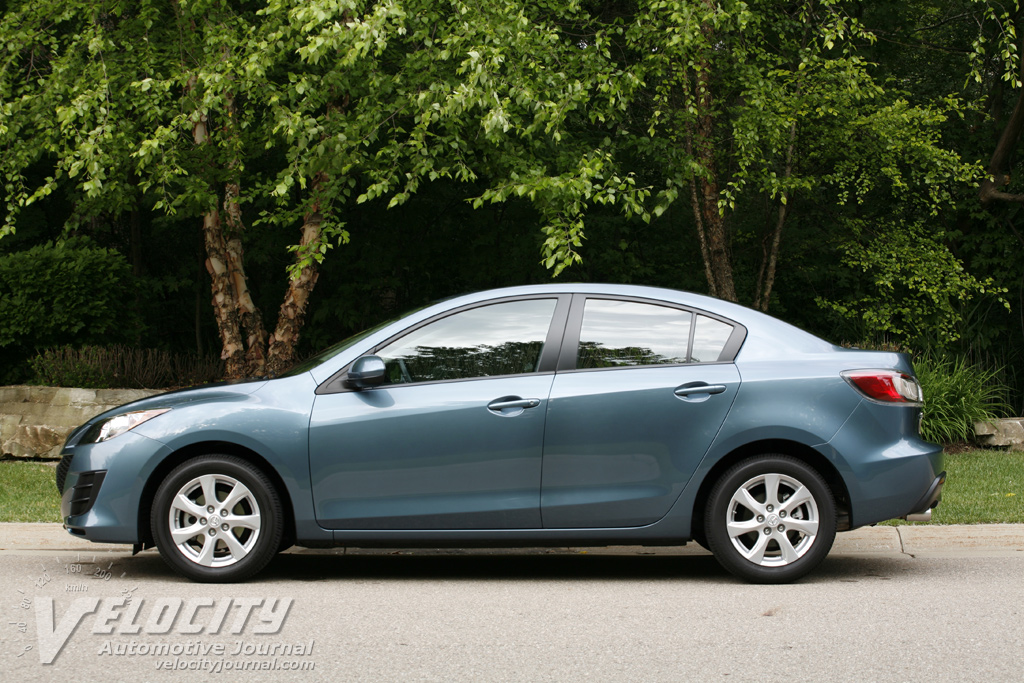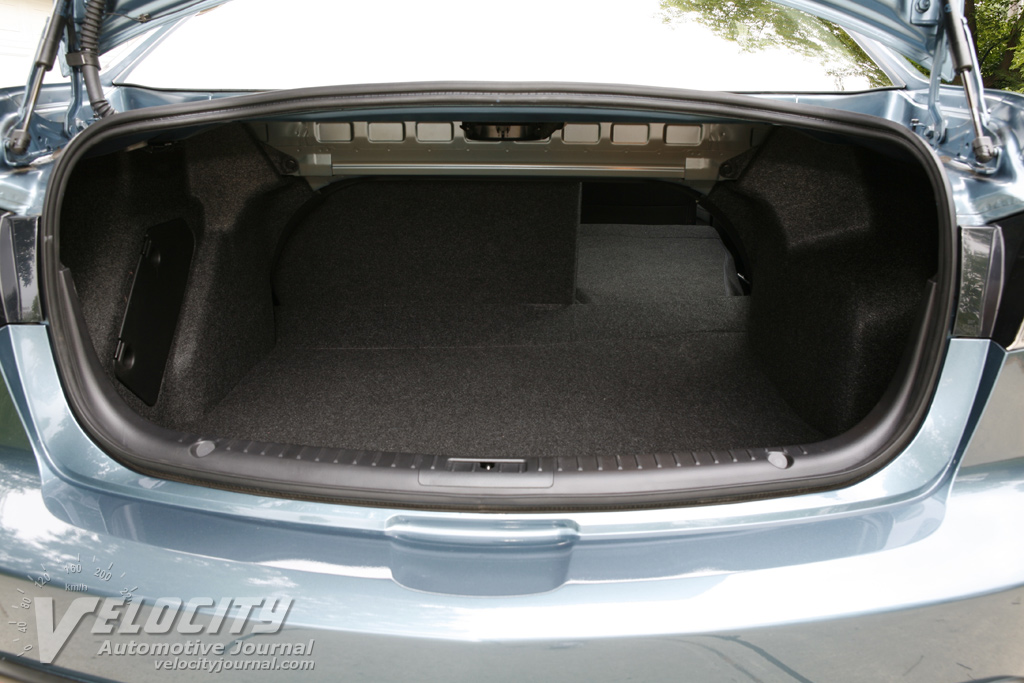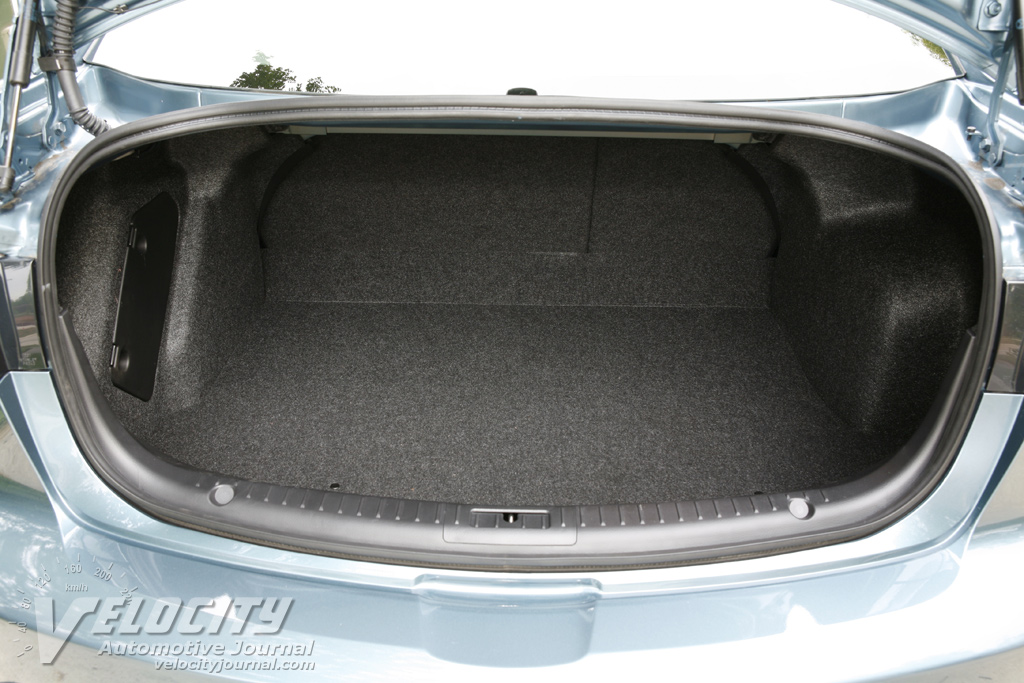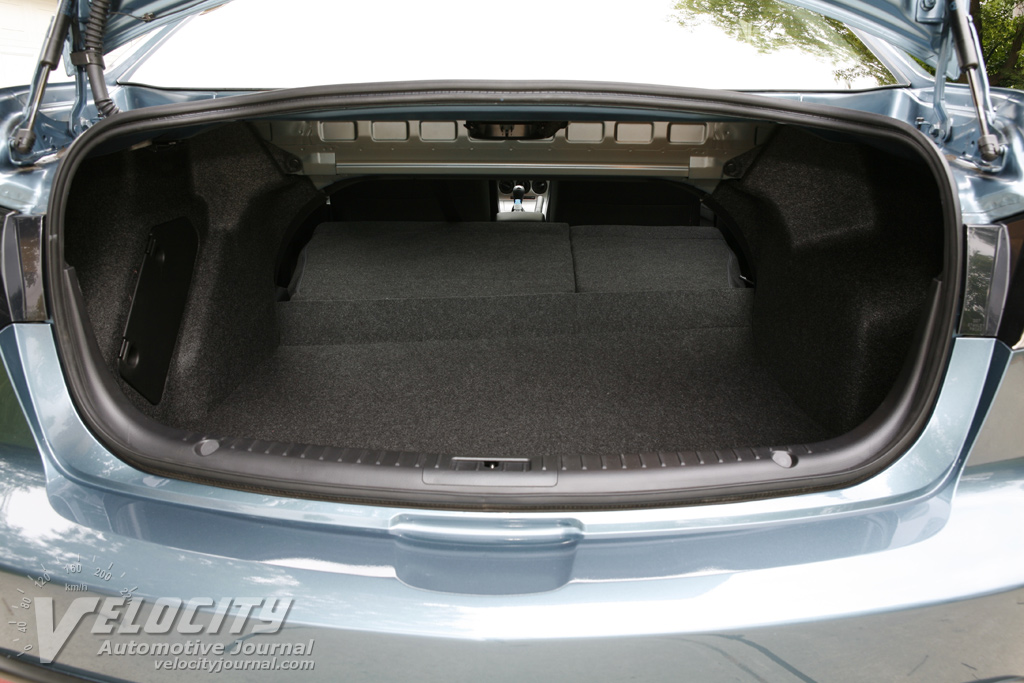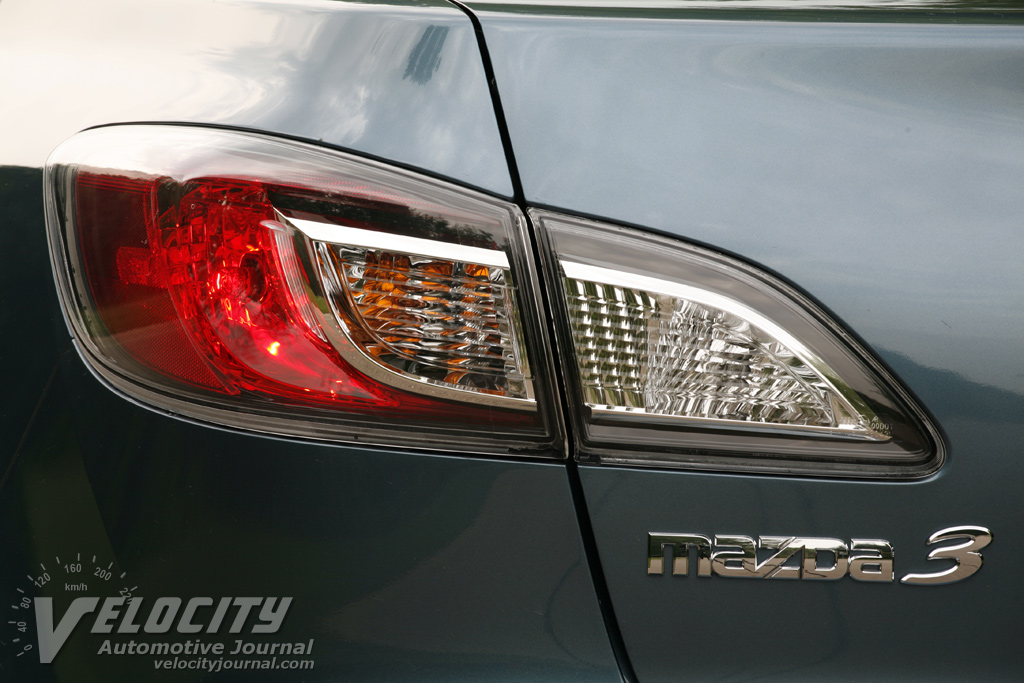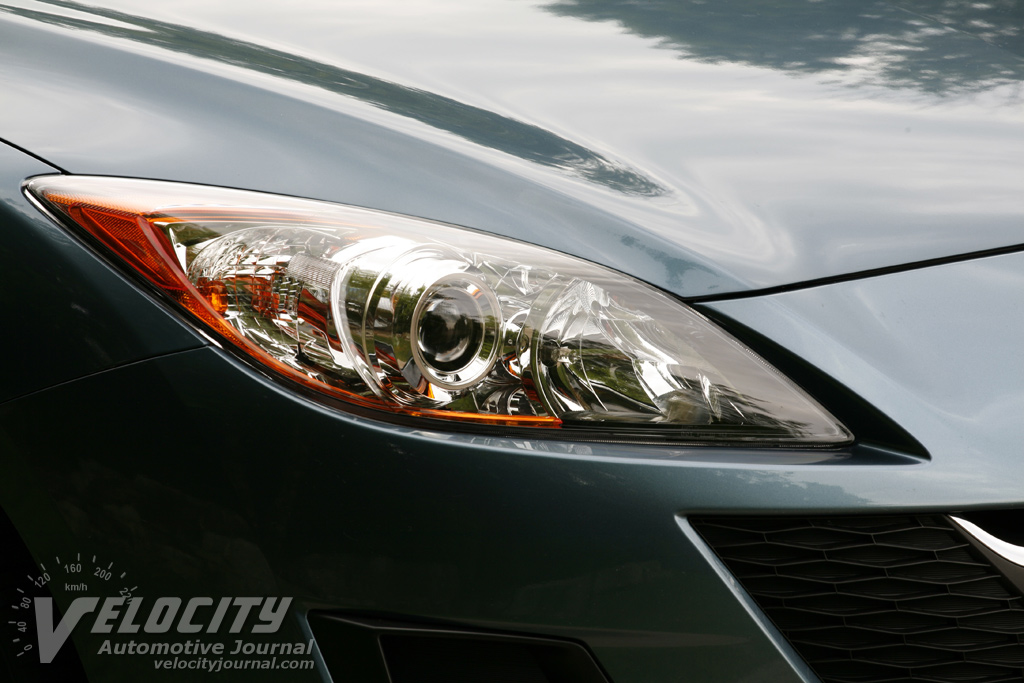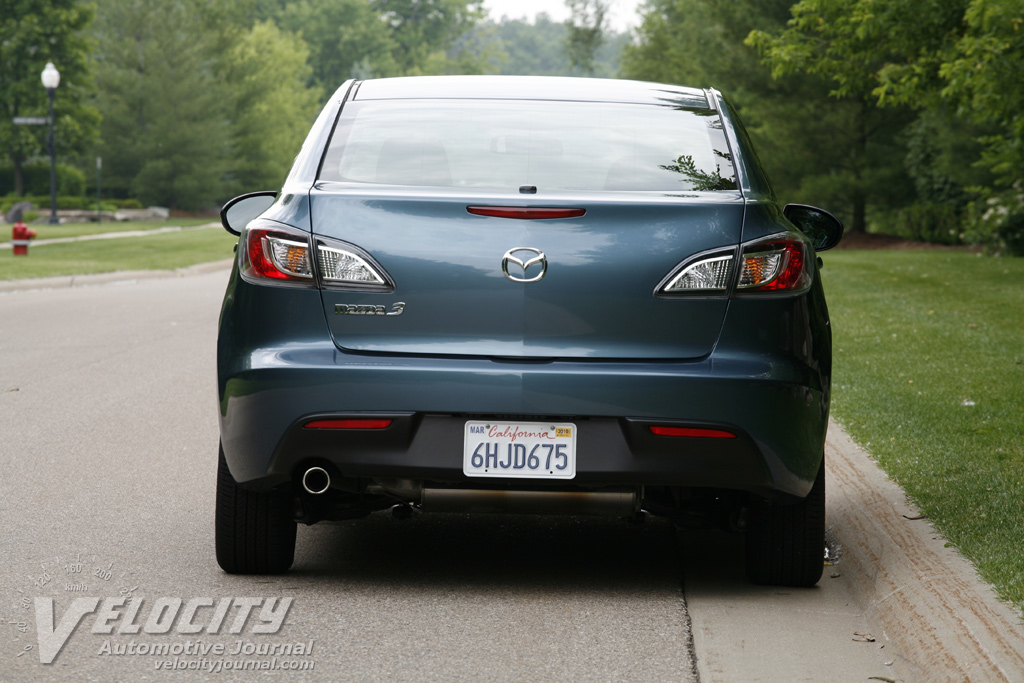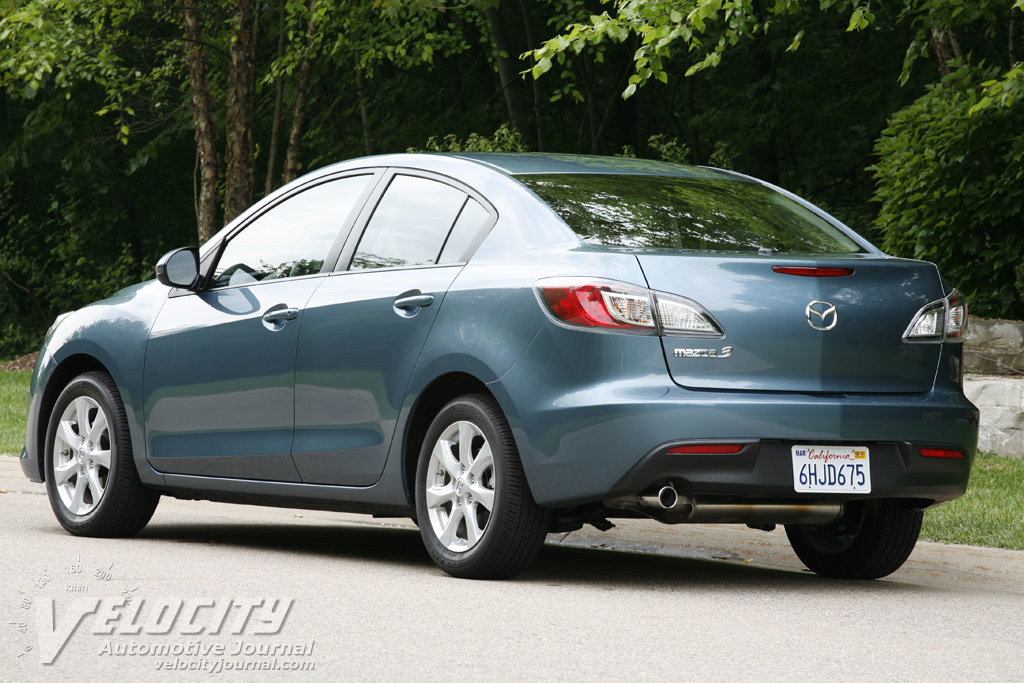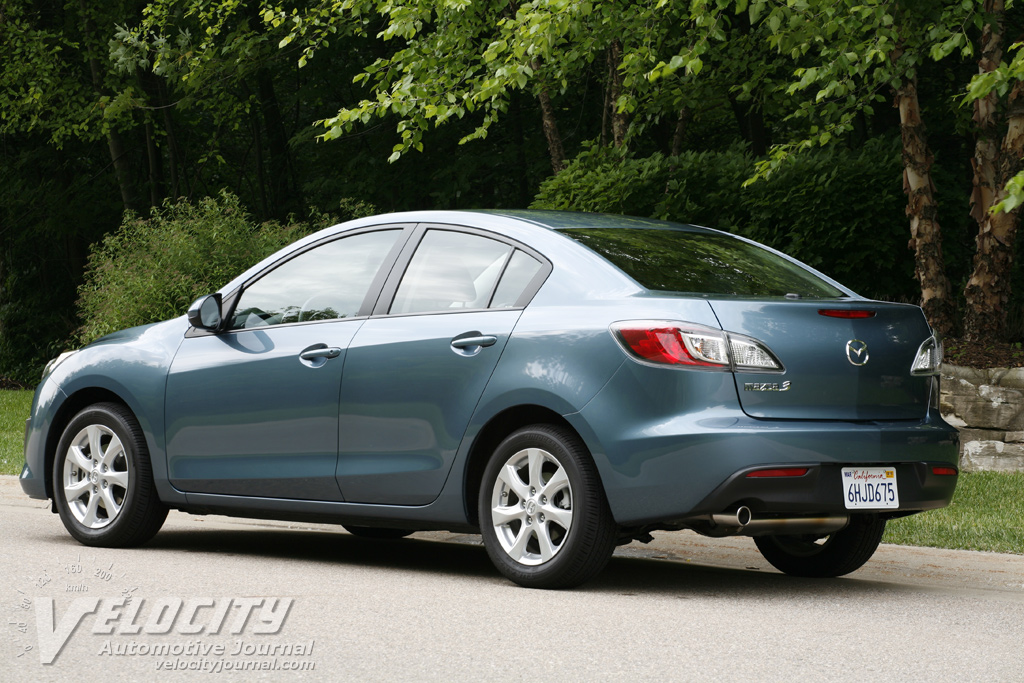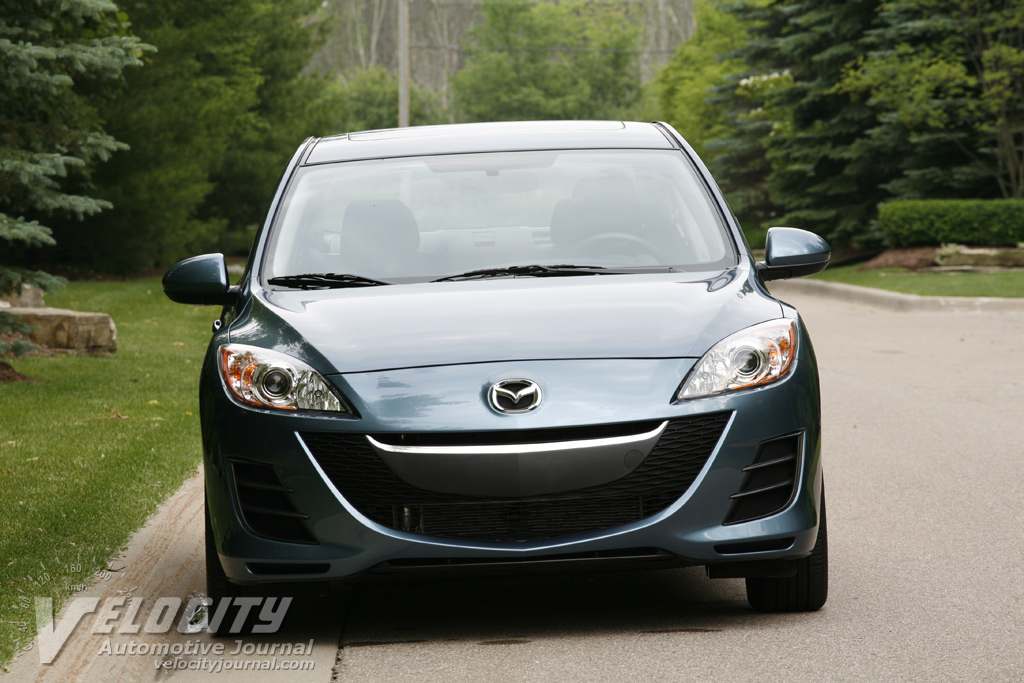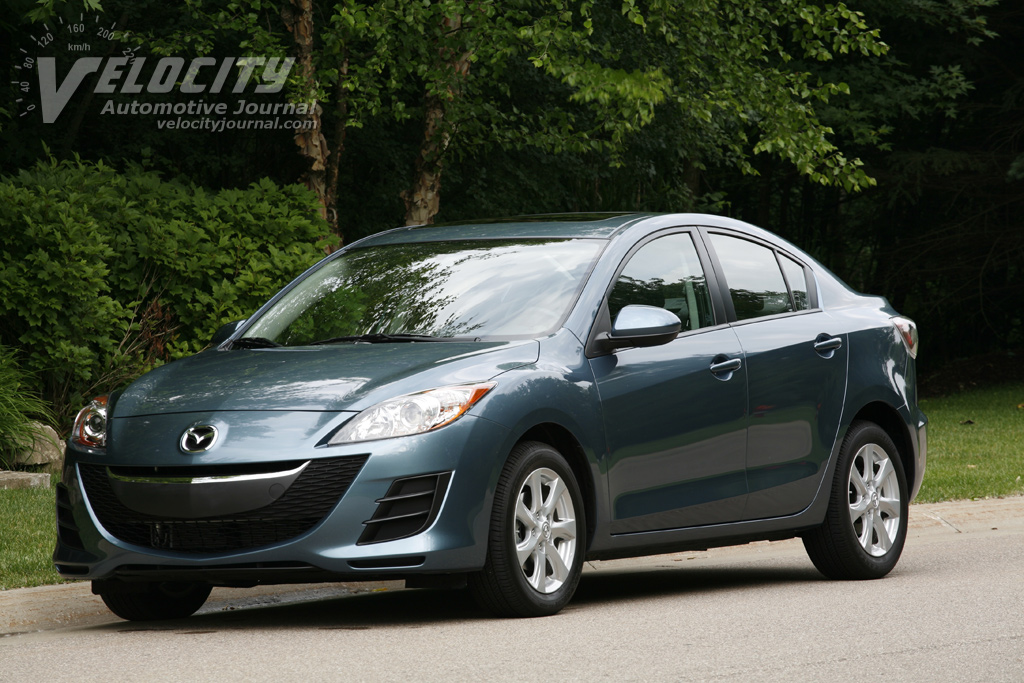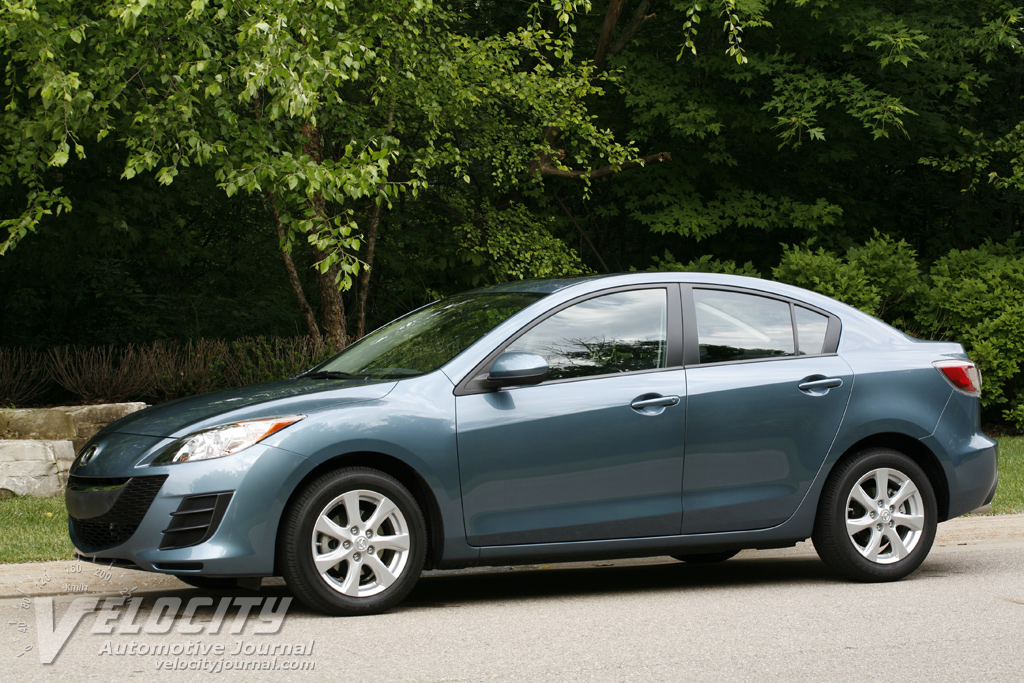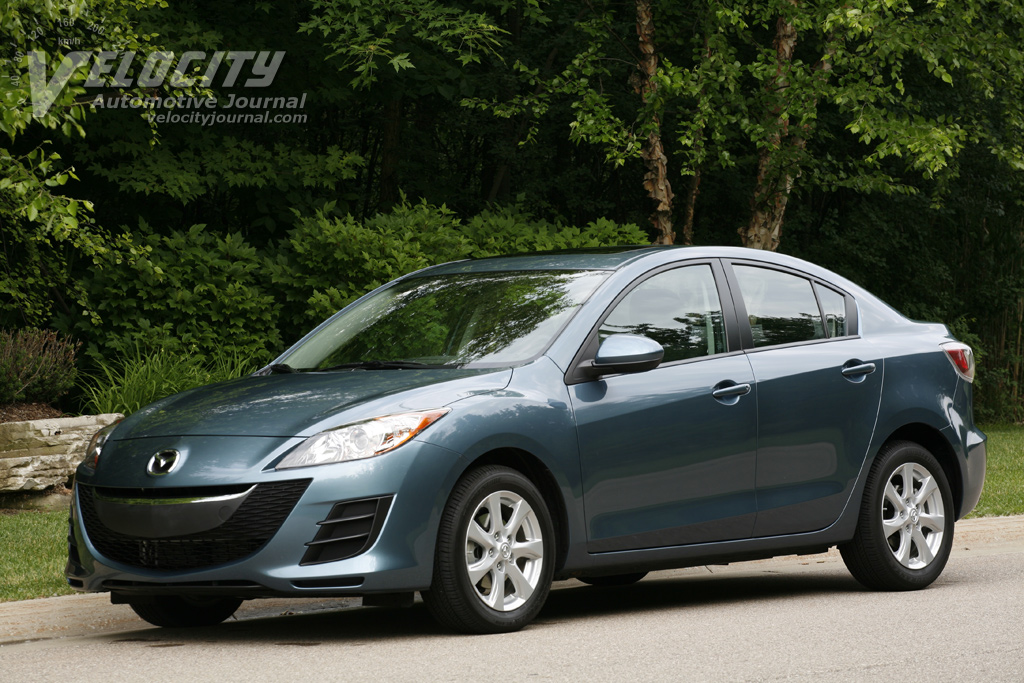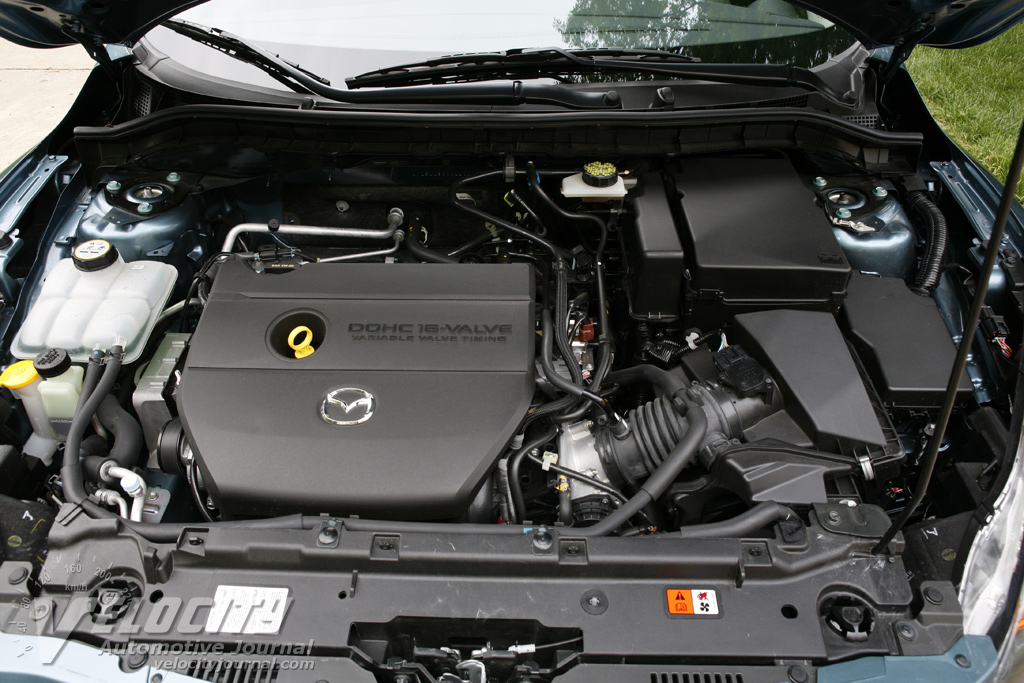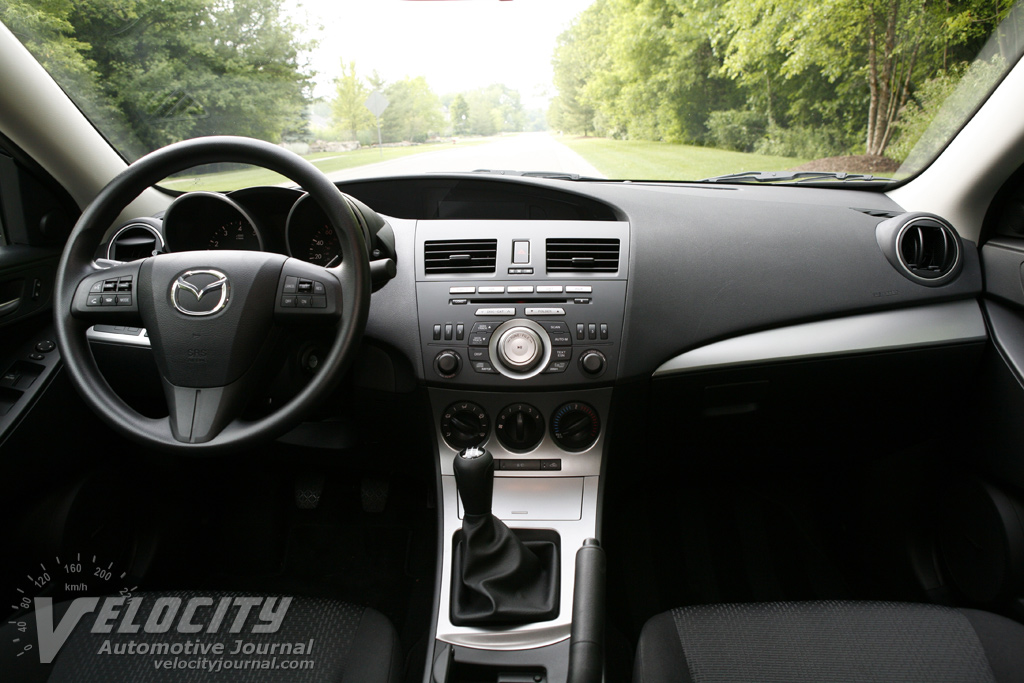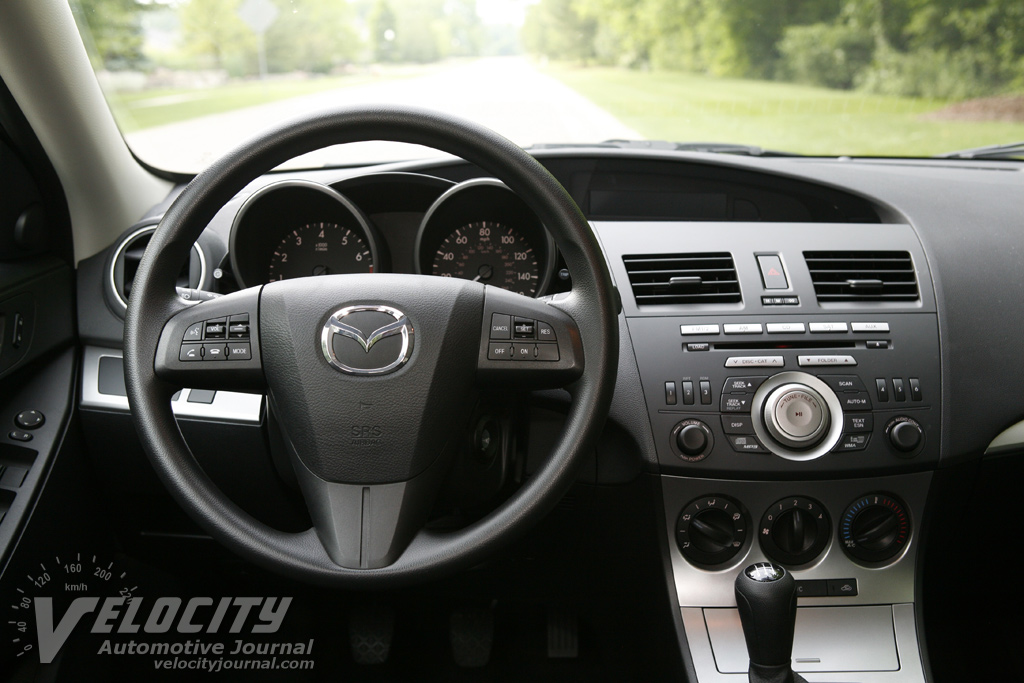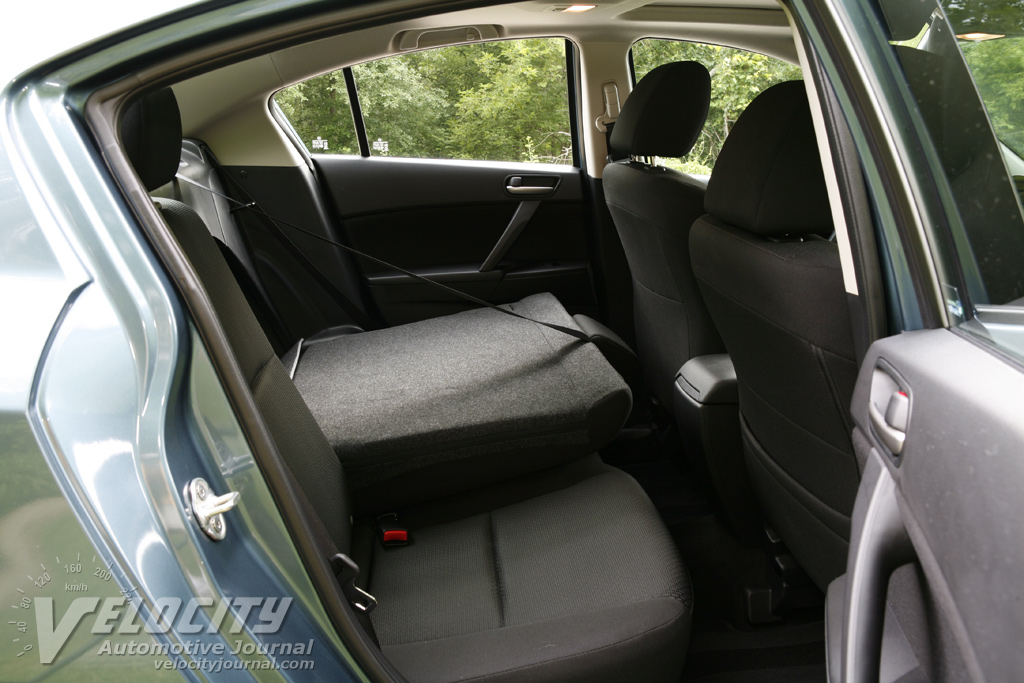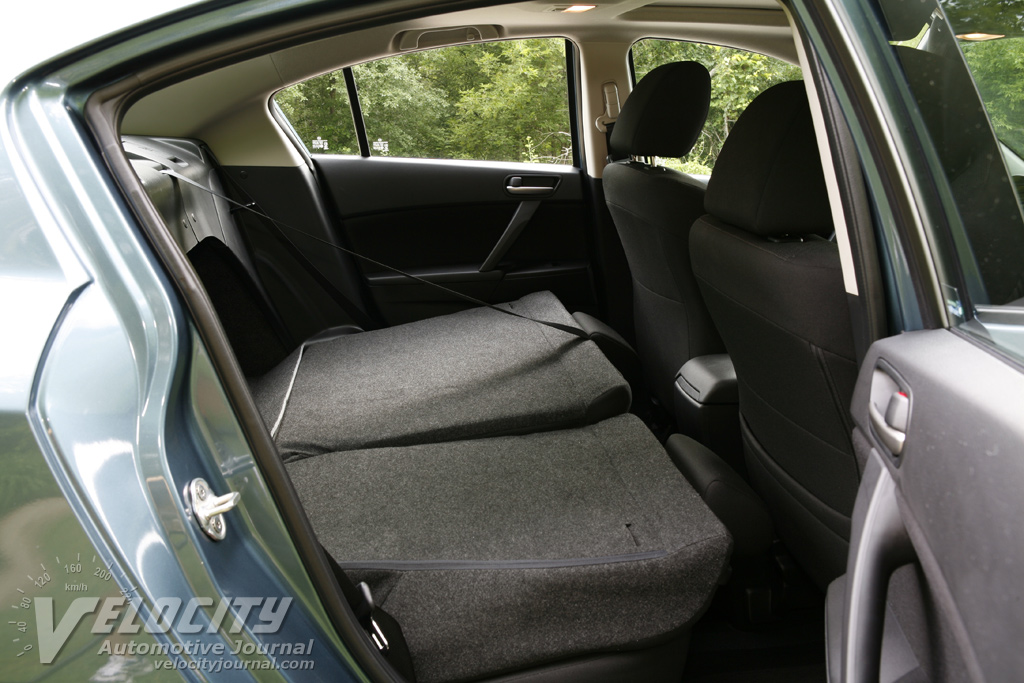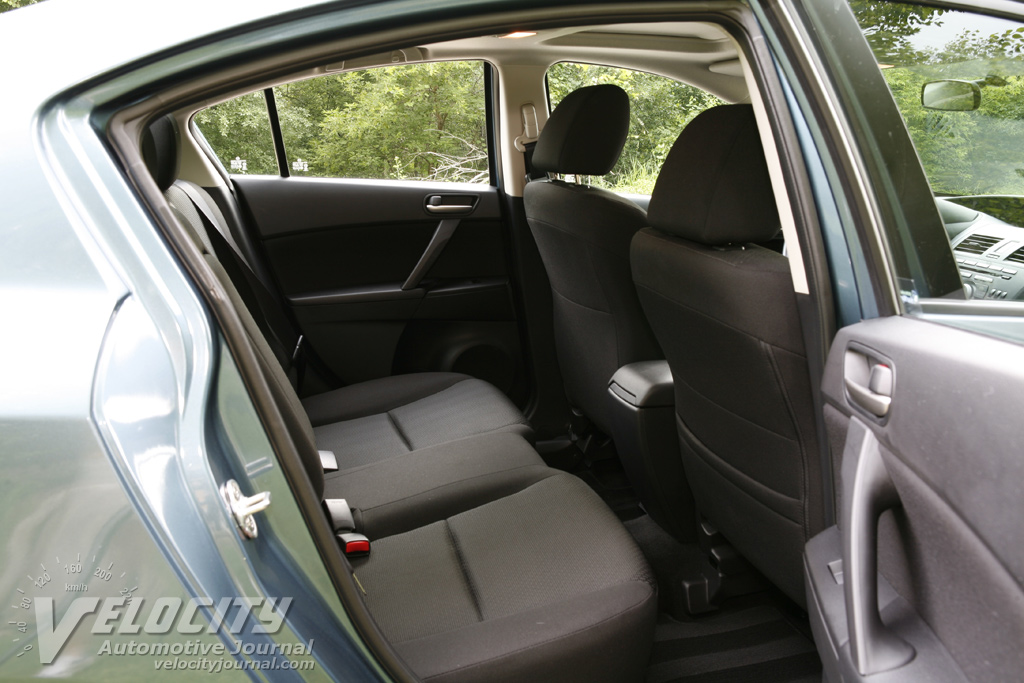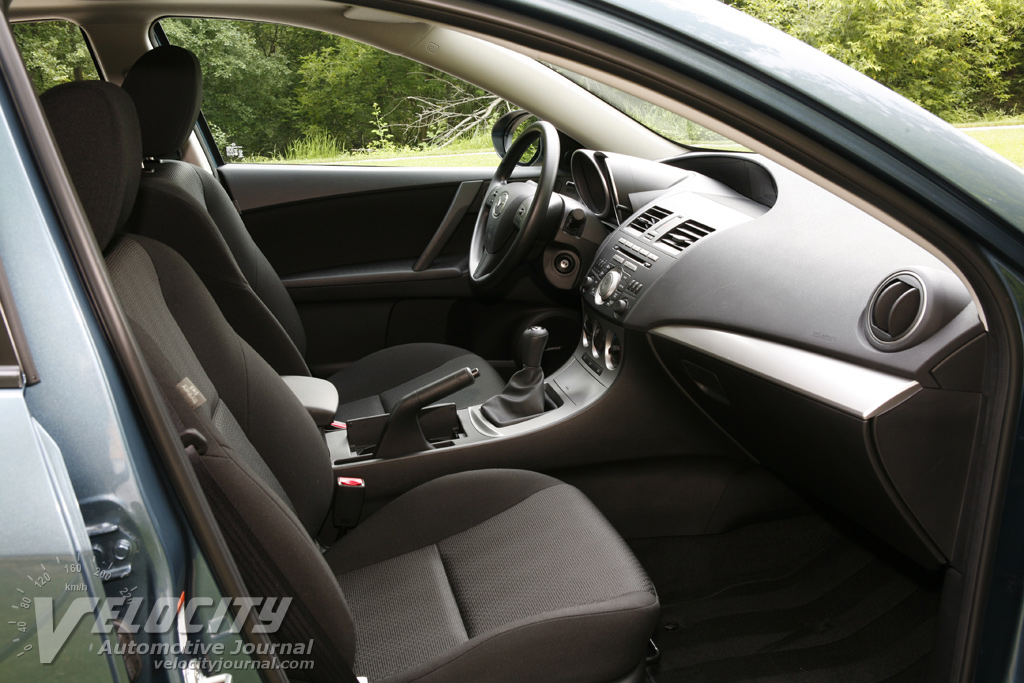2010 Mazda3 Touring
08/22/2009
Shahed Hussain
The original Mazda3 attracted customers looking for an affordable, sharp handling sedan or hatchback. In its second iteration, Mazda's best selling model broadens its appeal to encompass a larger swath of the segment dominated by Corolla, Civic, and Focus. With the newest entry in its class, Mazda brings technology once available in more expensive cars to the compact segment.
Significant changes for the 2010 Mazda3 include an optional 2.5L inline-4, reduced aerodynamic drag, optional AFS (Adaptive Front-lighting System) with bi-xenon headlamps and available Dynamic Stability Control. As before, both 4-door sedan and 5-door hatchback body styles are offered. The Mazda3i sedan comes in SV, Sport, and Touring trim levels, while the premium Mazda3s (sedan and hatchback) is available in only Sport and Grand Touring models. Powertrain choices include a 2.0L (Mazda3i) or a new 2.5L inline-4 (Mazda3s), coupled to a standard 5-speed manual (2.0L) or a 6-speed manual (2.5L); both engines can be ordered with an optional 5-speed automatic. Pricing starts at $15,795 for the base 4-door SV and climbs to $22,250 for the 5-door Grand Touring. Our test vehicle was a midrange 4-door Touring model ($17,500) equipped with the $1,395 Moonroof/6CD/Bose Package and $430 Sirius satellite radio. The total sticker price was $19,995, including the $670 delivery charge.
With sweeping curves and a clean, understated dashboard design, the Mazda's interior initially appears to be from a more expensive car than one might expect, but some signs of cost-cutting are evident. Instead of leather covering, Mazda substituted slippery plastic for the steering wheel rim and shift knob (leather is standard on Mazda3s models). The instrument panel consists of individual binnacles for the 8,000 RPM tachometer and 160-MPH speedometer; oddly, no coolant temperature gauge is included. Buttons and knobs for the optional Bose audio system are logically arranged on the center stack. A small multi-function display above the center vents shows vehicle and audio system status; Mazda3 models equipped with the navigation system substitute a color LCD screen for the monochrome display instead. Cupholders are located on the center console, front door pockets and in the center rear seat armrest.
Cloth seats are standard on most Mazda3 trim levels, although Grand Touring models substitute plush heated leather seats instead. Touring and s Sport model get upgraded front sport seats, covered in a shiny textured black fabric. Despite adequate thigh and torso support, the seat cushion was too firm for our preference. The manual 6-way driver's seat lacks lumbar adjustments, but should accommodate most occupants under 6-ft. tall. Rear passengers under 5'-10" benefit from decent headroom and legroom; the split folding bench seat will accommodate two occupants in comfort, and a center passenger for short trips.
Mazda's standard 2.0L inline-4 offers more horsepower and torque than most of its competitors: 148-bhp @ 6500 RPM and 135 lb.-ft. @ 4500 RPM. This all-aluminum DOHC/VVT powerplant is exceptionally smooth and willingly revs past the 6,500 RPM redline; torque below 3,000 RPM is unimpressive, but improves as the tachometer sweeps past 4,000 RPM. At highway speeds, the inline-4 is reasonably unobtrusive, matching the refinement of similar Honda and Toyota powerplants. Passing other cars usually requires a downshift into fourth, although acceleration only improves marginally as a result. At 2,868 lbs., the Mazda3i is one of the heavier cars in its class, which explains why the 2.0L seems to lack midrange punch. Top speed is capped at just below 117 MPH for all Mazda3 models.
The standard 5-speed manual is a slick-shifting gearbox with light, positive throws; in concert with a progressive, low effort clutch, this transmission is an enthusiast's delight. The EPA fuel consumption rating with the 5-speed manual is 25/33 MPG (city/hwy.). Taller final drive gearing for the available automatic transmission (3.458:1 vs. 4.105:1) allows identical mileage on the highway, but the automatic gives up one MPG in the city compared to the manual gearbox. The 2.0L coupled with the 5-speed manual provides adequate performance if you're willing to rev past 4,000 RPM, so it will likely become the preferred powertrain for enthusiasts.
All Mazda3 models are equipped with 4-wheel disc brakes, ABS, Electronic Brake force Distribution (EBD) and Brake Assist. Front brakes are 10.94-in. diameter vented discs, with 10.43-in. solid discs in the rear. The heavier Mazda3s is equipped with larger diameter front and rear brakes. Dynamic Stability Control is also standard on the Touring and all models equipped with the 2.5L engine. Subjective brake performance was above average, with a firm, progressive pedal and confident stopping power. We did note significant brake dive under hard braking.
Mazda's fully independent suspension setup uses MacPherson struts, coil springs and stabilizer bar in front, while the rear multi-link layout consists of coil springs, dampers, and a stabilizer bar. The Touring model's suspension tuning is biased toward a comfortable ride, sacrificing some of the nimble handling of the previous generation Mazda3. Granted, the 4-door sedan is not intended to be the most sporting variant in the lineup, but we were disappointed with the soft springing and underdamped suspension that resulted in excessive body roll. However, the suspension soaked up most bumps and potholes without complaint, delivering the benefits of the comfort-oriented suspension tuning. Mazda's rack-and-pinion steering provides excellent feedback and accuracy; the electrohydraulic variable-assist system ensures optimum steering effort in parking lots and dials back assist on the highway. The standard P205/55R16 Bridgestone Turanza EL400 tires offer adequate straight-line traction, but understeer excessively, especially around tight curves. In compensation for their mediocre handling, the Turanzas do provide a cushy ride, and are exceptionally quiet on the highway.
In the fiercely competitive compact sedan market, the new Mazda3 now offers the spacious interior and build quality to take on the segment-leading Corolla and Civic. As the midrange entry in the lineup, the Mazda3 Touring includes additional standard equipment and more power than a comparable Corolla S and Civic EX-L. As with the Toyota and Honda, the nearly $20K Mazda3i faces stiff competition from many midsize sedans, as the normal pricing gap between these segments has nearly disappeared. But for customers looking for a fuel-efficient sedan with distinctive styling, the Mazda3i is worth considering.

